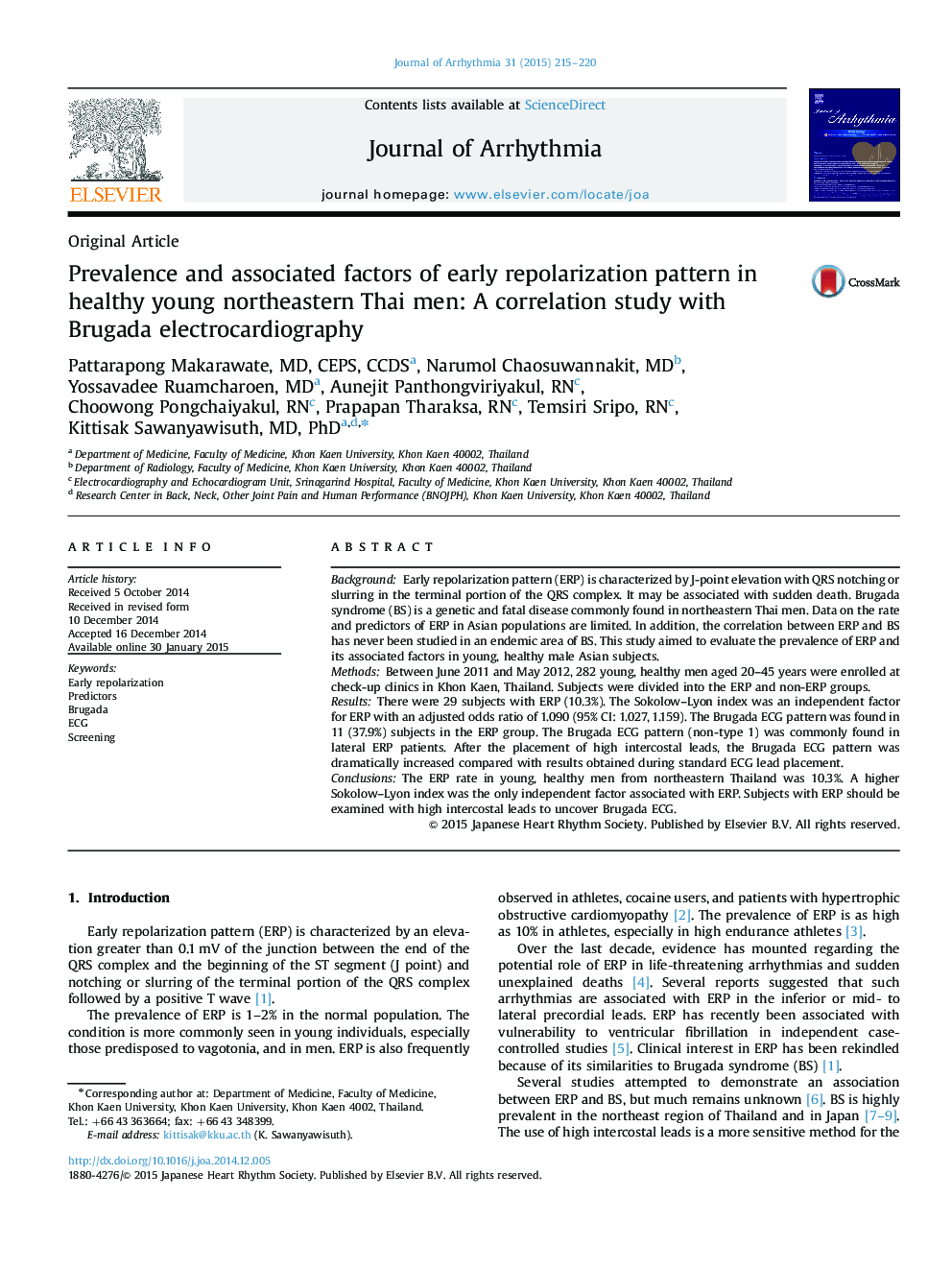| Article ID | Journal | Published Year | Pages | File Type |
|---|---|---|---|---|
| 2957537 | Journal of Arrhythmia | 2015 | 6 Pages |
BackgroundEarly repolarization pattern (ERP) is characterized by J-point elevation with QRS notching or slurring in the terminal portion of the QRS complex. It may be associated with sudden death. Brugada syndrome (BS) is a genetic and fatal disease commonly found in northeastern Thai men. Data on the rate and predictors of ERP in Asian populations are limited. In addition, the correlation between ERP and BS has never been studied in an endemic area of BS. This study aimed to evaluate the prevalence of ERP and its associated factors in young, healthy male Asian subjects.MethodsBetween June 2011 and May 2012, 282 young, healthy men aged 20–45 years were enrolled at check-up clinics in Khon Kaen, Thailand. Subjects were divided into the ERP and non-ERP groups.ResultsThere were 29 subjects with ERP (10.3%). The Sokolow–Lyon index was an independent factor for ERP with an adjusted odds ratio of 1.090 (95% CI: 1.027, 1.159). The Brugada ECG pattern was found in 11 (37.9%) subjects in the ERP group. The Brugada ECG pattern (non-type 1) was commonly found in lateral ERP patients. After the placement of high intercostal leads, the Brugada ECG pattern was dramatically increased compared with results obtained during standard ECG lead placement.ConclusionsThe ERP rate in young, healthy men from northeastern Thailand was 10.3%. A higher Sokolow–Lyon index was the only independent factor associated with ERP. Subjects with ERP should be examined with high intercostal leads to uncover Brugada ECG.
